St Declan’s Well, Ardmore, County Waterford
In last week’s thrilling installment of Fifty Holy Wells™, we heard the story of how a Mr J.P. Rahilly had his plans for a clifftop wellhouse near Ardmore thwarted by the local priest. In this week’s nail-biting sequel, we discover an additional reason why. As well as expressing the Church’s disapproval of the open-air boozing of the construction workers, it seems the priest was also of the opinion that ‘one holy well in Ardmore is quite enough.’
What could he have meant? Stay tuned to find out!
When you come to the end of the Ardmore cliff walk, before you reach the outskirts of the village, you will find yourself in a green glade on the cliffside, dominated by the ruin of an old church:
How old, and who built it? This is where things get interesting (for nerds like me, anyway.) This church was built by St Declan of Ardmore, a saint whose memory, and indeed archaeology, entirely dominates this little seaside settlement. Declan was said to have founded a monastery a mile or so away from here, around the year 416, the ruins of which are still remarkable today:
The eagle-eyed among you may have spotted that 416 is approximately 15 years before St Patrick, the ‘apostle to the Irish’, was said to have arrived in the country. Here we have another example of the intriguing possibility (or likelihood) that the Christian faith arrived here before Patrick. I’ve written here before about a possible Eyptian connection with the first Christians on these shores, so it’s interesting that the place where Declan’s church stands has the common place name Dysert - which may be a corruption of ‘desert.’
Declan of Ardmore was a powerful and dynamic character, with some influence in the southeast of this island. When he died, he was buried in his monastery, and his grave became a shrine and a place of pilgrimage. The small building in the picture above is the oratory that was built over his tomb. So popular was Declan’s grave for its healing properties, in fact, that over the centuries the entire thing - including the remains of St Declan himself - were eventually stolen. All that remains today is the saint’s empty grave, which you can see through the now-barred door:
The monastery ruins are famous today (again, mainly amongst nerds) for their twelfth-century Romanesque stone friezes depicting Biblical scenes. You may be able to spot the temptation in the garden, the judgement of Solomon, the adoration of the Magi and a few other things I’ve not managed to work out myself:
In a story which you have now heard many times if you’ve been subscribing to the Abbey for a while, Declan’s monastery became enormously popular as the saint’s reputation grew. So much so that Declan retreated to that clifftop site at Dysert and built himself a hermitage, over which the existing church ruin was built. The site of his hermitage is marked today by a couple of alcoves in the wall, just big enough to sit in:
You may have spotted the fresh flowers in that picture. It’s just one indication that the cult of St Declan is not only alive, but in rude health. In one of those mysterious developments that are probably never to be understood by us this side of the mirror, Declan’s name and reputation have undergone a revival in the last few decades. He is very much still a living saint, something that those freshly-carved marks on the floor confirm. It’s the practice here for pilgrims to the well to carve a cross in the stonework once they have finished their rounds.
Ahem. I should probably get to the well:
You’ll see from the picture at the top of this page that the wellhouse has two entrances, for reasons I’m not clear about, and is topped with two ancient stone carvings of crucified figures. Originally there were three: this is Christ and the two thieves. One of the thieves, aptly, seems to have escaped again:
This well is said to have been the place where Declan baptised some of the first Christians in Ireland. As such, it has been a place of pilgrimage, in all likelihood, for over a thousand years. Here you can watch a fun little two-minute film from 1910 of pilgrims at the well. I like the contrast of the local farmers with caps in hand and the well-dressed ladies with their bustles and parasols.
You’ll notice something else in that film as well: a huge boulder on Ardmore beach. It’s still there; apparently it will be there until the end of time. The story goes that St Declan was sent on a mission to Rome as part of his ministry, and on his return he realised he had forgotten his handbell (you may remember St Conall’s bell from one of our earlier well visits.) Luckily, this boulder floated across the sea from Rome with the bell on top, and deposited itself on Ardmore beach. Declan built his monastery here to mark the spot. Squeeze yourself under the boulder, as the pilgrims are doing in the film, and you will bring yourself good luck. There are worse ways to spend an afternoon at the beach.





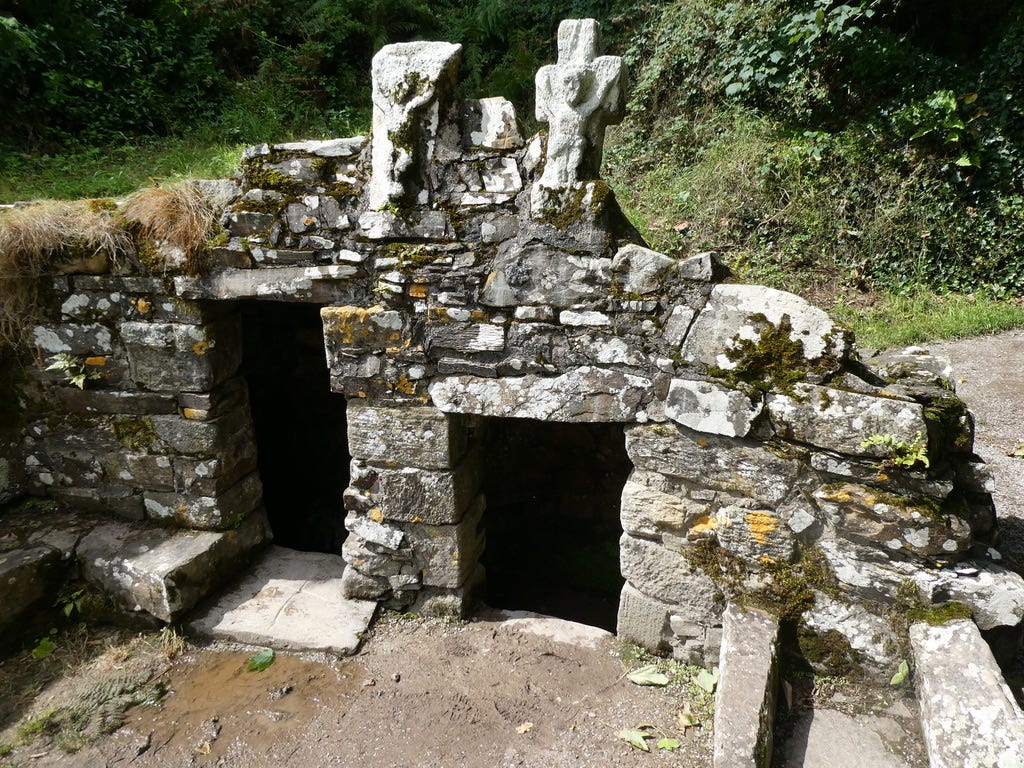
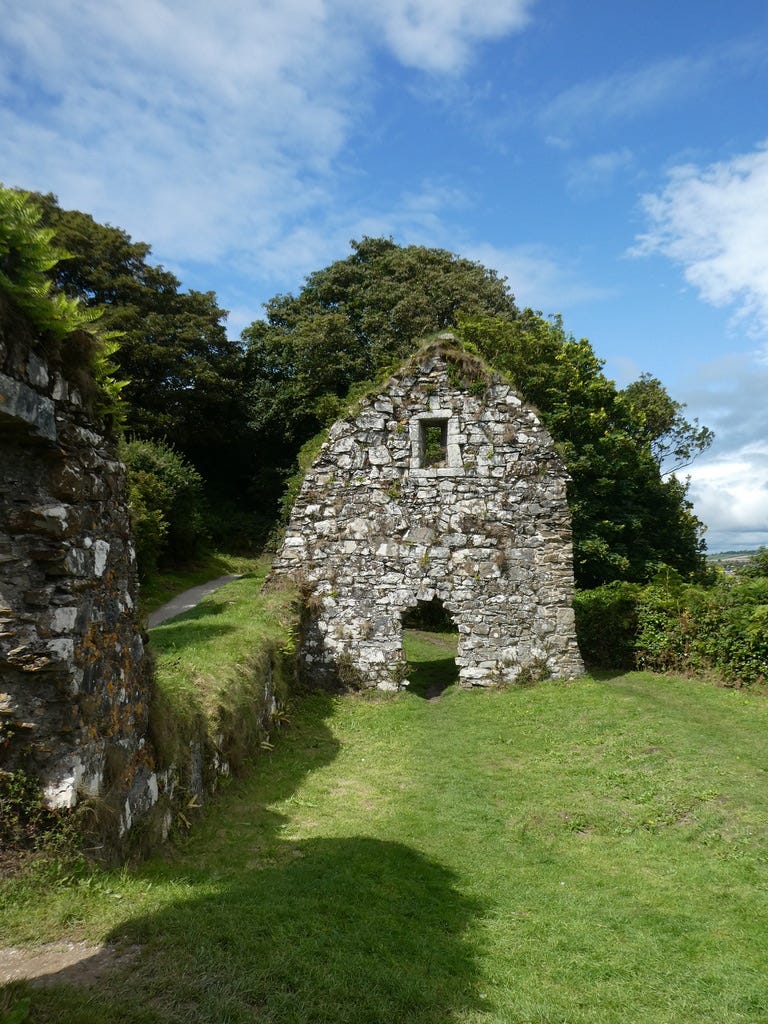


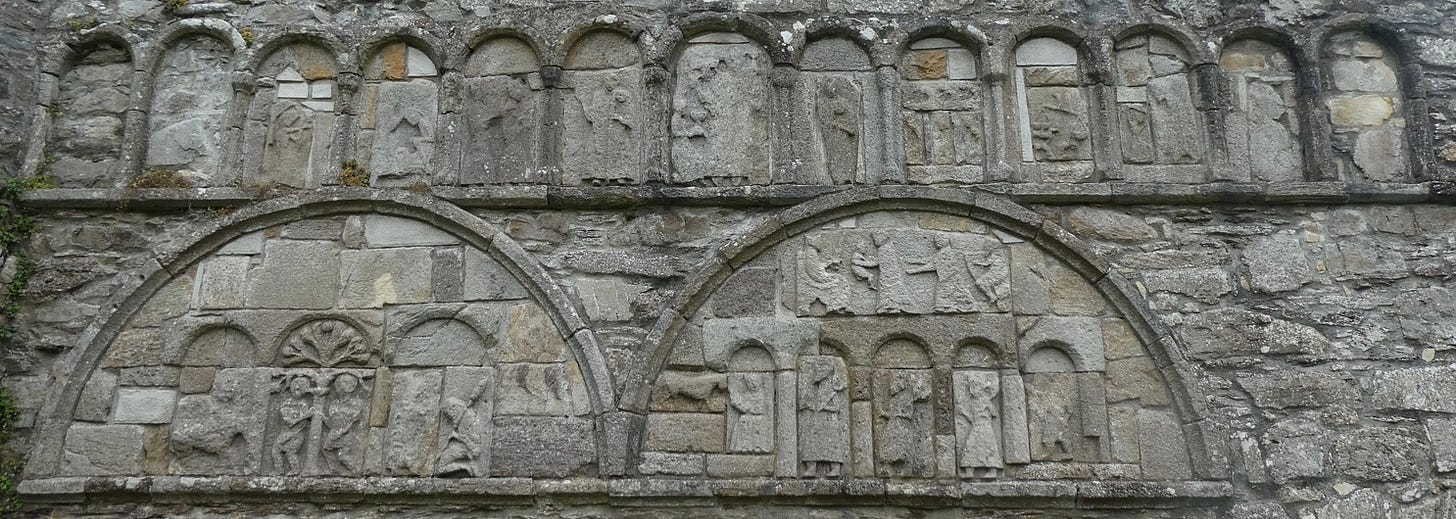

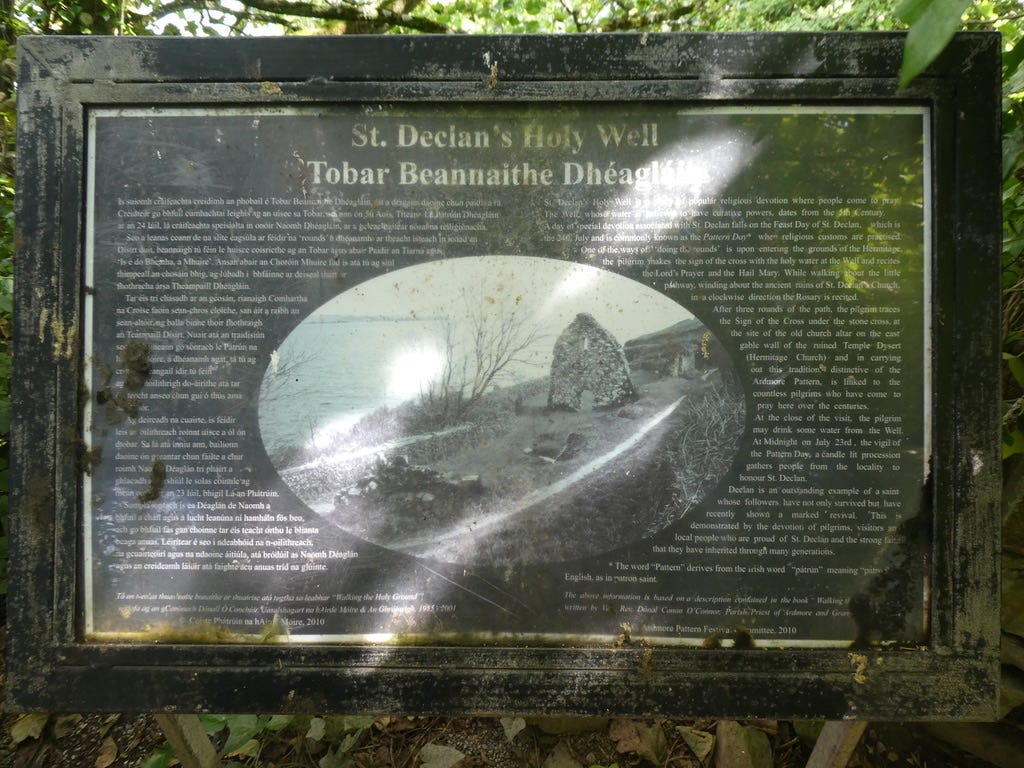
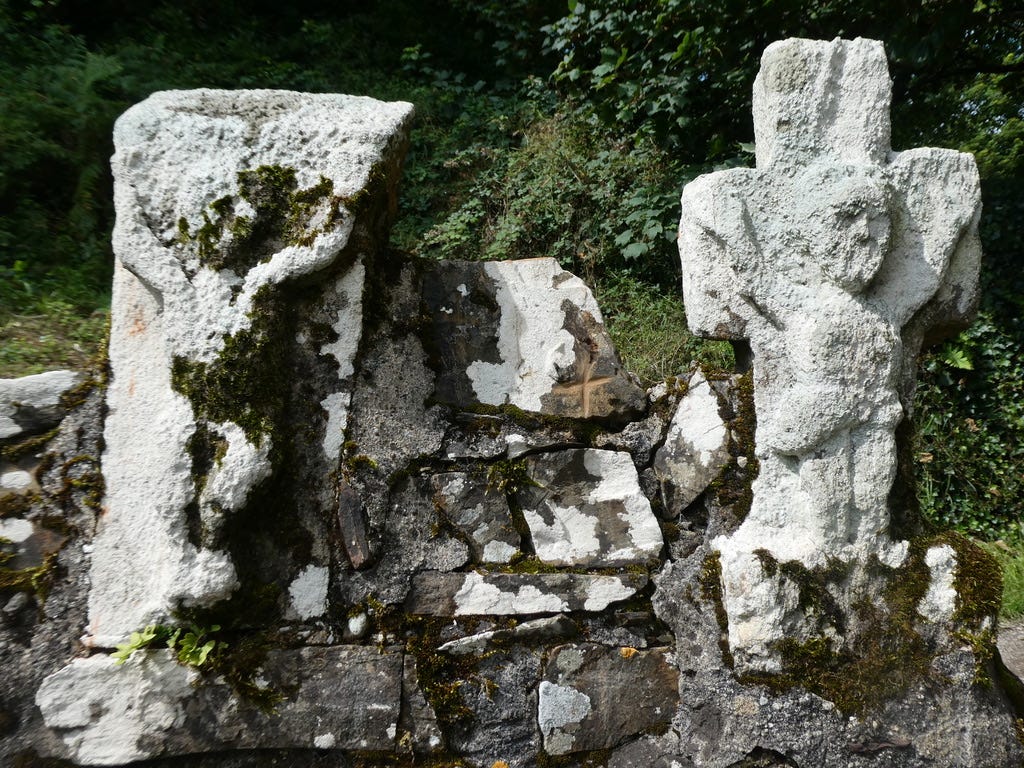

This is a great post, was actually a cliff-hanger, and has left me wanting to know more. These coastal saints draw me, unsurprisingly. Next week is St Patrick's Day. All the local pubs round here in Wessex are already decked in green plastic banners and have ordered more Guinness for 'St Paddy's Weekend'.
St Declan's feast day is 24th July. Seeing as Declan was the first of the two to bring the faith to Ireland, surely his feast day should be celebrated worldwide with equal fervour? May I suggest an entire weekend spent retreating to beaches, paying close attention to rocks, avoiding all but peaceful company, tending sacred springs and spending time in contemplation? (I may inadvertently be listing most of my favourite activities here.) Who's up for a secluded summer coastal hermit-in as a massive uncivil inverse to the giant booze-up that modern urbanised St Patrick's Day has become?
Apologies for going off-topic, but I was so pleased to see the referendum results yesterday.
Well done to the Irish.